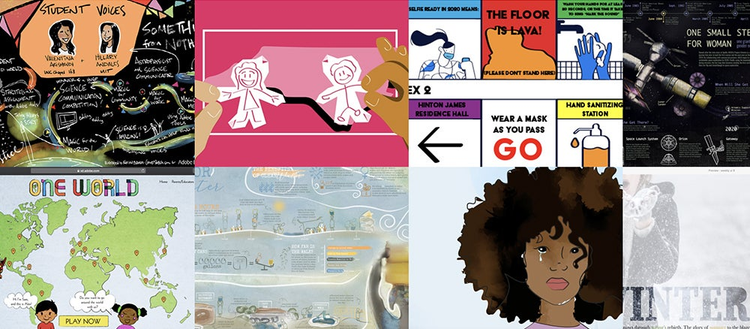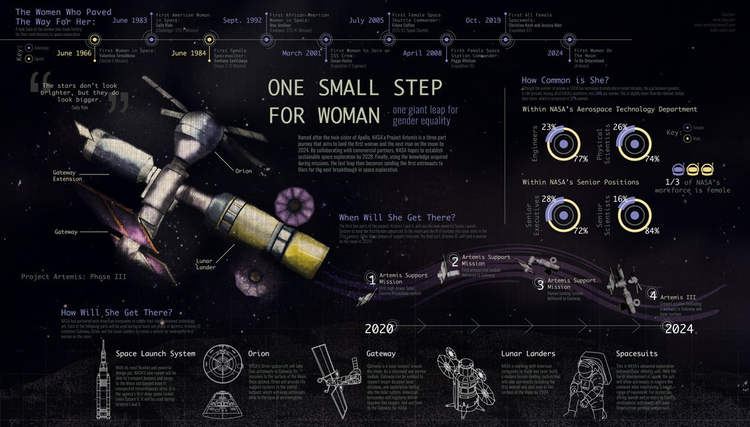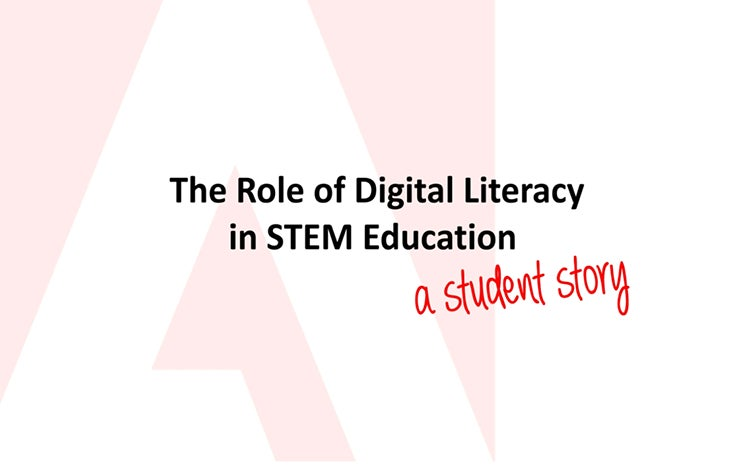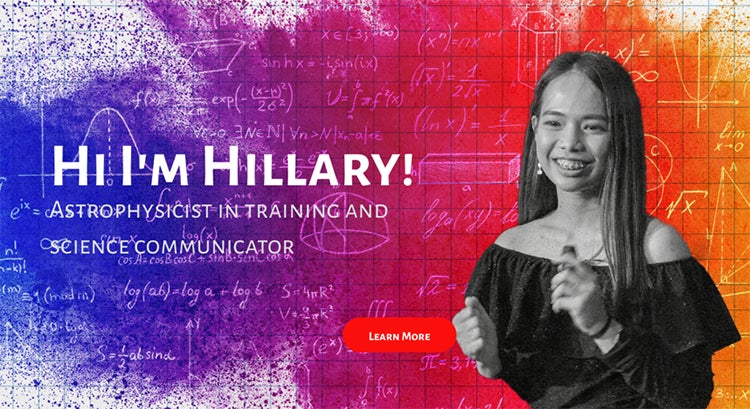How digital literacy skills helped me thrive in my virtual internship

With the summer days coming to an end, so does my virtual internship with the Adobe Education team. It’s crazy to think this journey started three years ago during my freshman year at University of North Carolina Chapel Hill.
In the fall of 2017, I took Professor Todd Taylor’s Multimodal Composition course. On the first day of class, Professor Taylor explained this course would teach us how to compose messages through five different modalities. The task was simple: find a story in the Chapel Hill community that was interesting, and then present it through a magazine article, podcast, video, website, and mobile app. In the process of doing so, we would be introduced to Adobe Creative Cloud.
Before this course, my experience with Creative Cloud was limited. In my mind, Adobe was synonymous with “Photoshop” and “Acrobat.” I had no idea of all the possibilities that existed through the rest of its products. I remember being in complete awe that I could actually view on my phone the mobile app I prototyped in Adobe XD.
When it came time to register for classes for the following semester, I knew I wanted to continue taking courses that taught me more about how to create through these different modalities. I enrolled in another English class focused on personal branding online. By the end of the semester, I had a digital portfolio showcasing all the projects I had created thus far.

This portfolio became very useful one year later, when I was chatting with a guest speaker who presented during one of my lectures. After class, he asked me if I had a resume with me. Although I didn’t, I was still able to pull up my portfolio site on my phone and show him some of the projects I had worked on. At the end of our conversation, he offered me a chance to interview at his company.
Yet as any anxious college student does, I applied to multiple opportunities for that summer, unsure of which ones would call saying, “Congratulations!” instead of, “We regret to inform you.” One of the experiences I applied to was a fellowship that funded self-designed projects that didn’t quite fit the typical “internship” or “study abroad” model. Seeing the power of visual storytelling, I wrote up a proposal for a project that documented the lives of immigrant, small-business owners living in Los Angeles.
Up until this point, all the projects I had created had been in-class assignments. I remember thinking to myself, “Why am I waiting for projects to be assigned to me when I have everything I need to create this on my own?” I realized I could apply everything I had learned in the classroom to projects that were personal passions of mine, too. When I heard back that I had been selected as a fellow, I packed my bags and moved across the country.
After spending that summer studying immigrant owned, small businesses, I became disillusioned with the public sector. While my project made me realize the shortcomings of public education, government communication, and immigration policies, it also shined a light on the opportunities for change.
I went back to school that fall knowing I wanted to complete my degree in journalism. At its core, journalism would teach me to always look at who the intended audience is and what the best way of reaching them would be – both of which are lessons I’ll find useful in any situation I come across in the future.

This brings me to Adobe and my summer internship with the Adobe Education team. For my internship project, I was tasked with telling the story of Hillary Andales, an MIT student using Creative Cloud to expand her science communication skills.
At first, the project seemed simple enough. That was, of course, before the words “pandemic” and “social distancing” were in anyone’s daily vocabulary. Having a remote internship was not ideal. The reality of COVID-19 was I would neither be spending a summer in San Francisco, nor would I be able to meet with Hillary face-to-face. In other words, my initial idea of filming Hillary in person and presenting her story through a typical interview style video would no longer be possible. I had to scramble to find alternatives.
In the early weeks of the internship program, I got to hear from Adobe CEO Shantanu Narayen. During the session, he encouraged all the interns to take risks. He told us some of his greatest accomplishments have occurred while outside his comfort zone. I took his message to heart and decided to take a risk on my project. I opted for the idea of a motion graphic to share Hillary’s story. My experience with Adobe After Effects had been limited, but I knew if I could get this right, then it would be the best modality to narrate her story.

Creating this four-minute animation tapped into all the skills I had been learning in class. I needed a good understanding of who I was creating this for and how to best communicate a story in a way they would be receptive to. I had to storyboard, record, and re-create Hillary’s story with just audio and illustrations. And most of all, I quickly had to adapt to conference calls and learn to collaborate with Hillary virtually. It was a culmination of everything I had learned both inside and outside of school. Having experience with telling impactful stories in a variety of modalities has allowed me to thrive not only in an academic setting, but now in my career, too.

While I don’t know what the future holds, my Adobe internship has shown me just how essential digital literacy skills are for today’s student. By having these skills — creativity, collaboration, communication, and critical thinking — I’ve been able to add meaningful projects to my portfolio. I’m confident now that UNC has prepared me for a world that is constantly changing – and even more, a world I can succeed in.